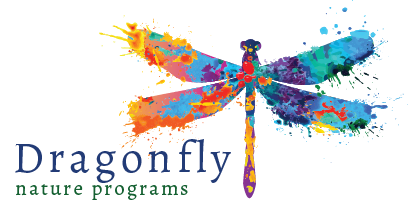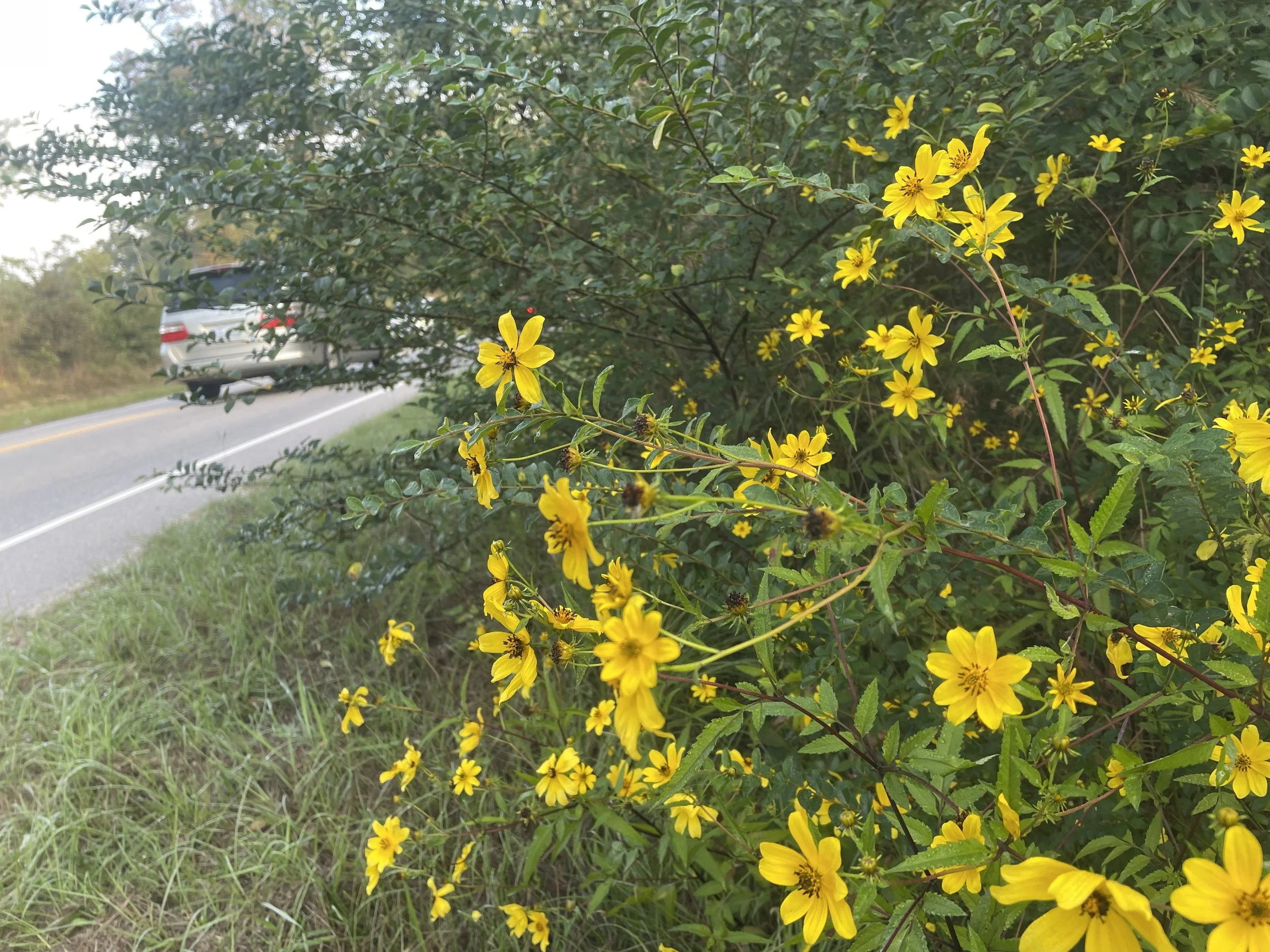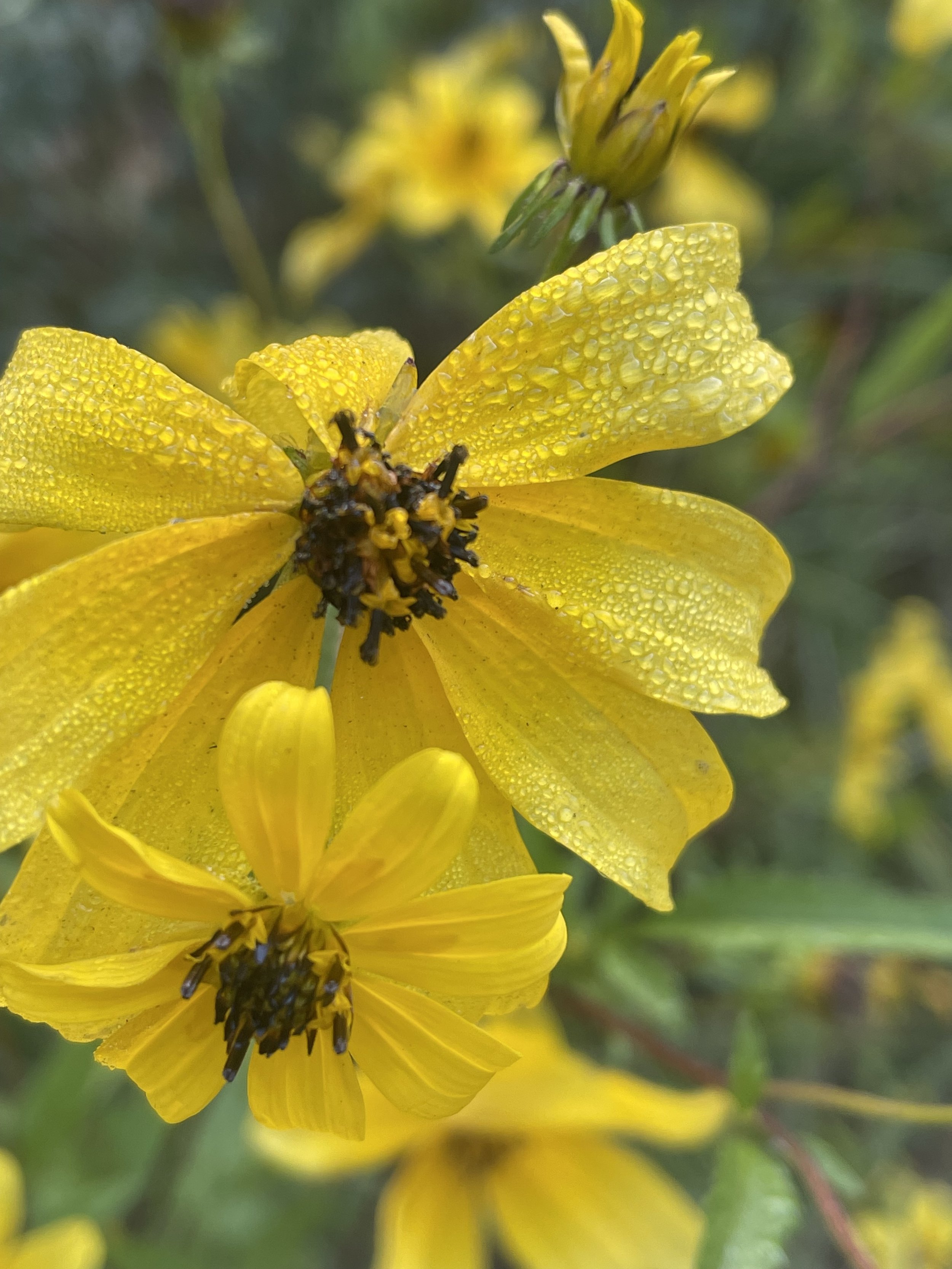Happy fall!
Morning dew glistens on the brilliant yellow tickseed wildflowers found on the side of New Hill Holeman Road outside of Holly Springs, NC.
Fall in the Piedmont of NC is a rollercoaster of heat waves and stunning fall weather. It’s the slow transition from green to auburn, crimson and gold. It’s the last bloom for flowers before winter settles in on us. It’s hard to drive around town and not admire the resilient tickseed wildflowers in full fall bloom this October.
Tickseed is one of my favorite flowers, also known as coreopsis. Coreopsis varieties can bloom from spring to fall. They are members of the same plant family as sunflowers, Asteraceae, or asters, so the bright yellow can’t help but seem familiar to admirers.
Like a typical sunflower, tickseeds are a composite flower. Composite flowers look to the amateur eye like one flower, but the center is actually made up of many smaller flowers clustered so tightly together they look like one. What we think of as petals are actually ray flowers. Each “petal” is actually 5 smaller true petals fused as one. Each ray flower and each composite flower makes one seed.
Hey, don’t fall asleep on me. You don’t have to remember this or understand it to enjoy the wild tickseed you see thriving on the sides of roads. In the wild they do well in poor soils, full sun and can be found in open woodlands and grasslands. They are able to thrive in the unmowed buffer zone between roadsides and nearby woods and I find them especially abundant in construction zones where mowing has ceased. That’s my lemonade in the lemon of unending road construction around southern wake county these days.
A bumblebee visits the composite tickseed flower on a sunny morning in October.
Beyond their sunny beauty, they are ecologically valuable, providing late season nectar for bees and butterflies. When these critters pollinate the many disc and ray flowers, a multitude of seeds will form providing ample food for birds. And if you hike passed these flowers or allow your dog to scurry through, their hitchhiking seeds will attach to fur, clothes and shoes, a form of seed dispersal which ensures the success of these fall beauties.
Don’t just zip around town, trying to avoid construction zones, impatiently tailgating behind school buses, your vehicles loaded with soccer players and young dancers late for practice. Try going the speed limit or just fast enough to smile at these wild and wonderful weeds.
Want to learn more about wildflowers?
I recommend Laura C. Martin’s “A Naturalist’s Book of Wildflowers”
Tickseed
is also known as beggarticks, stickseed, tickseed sunflowers and black jack. It’s in the same flower family as daisies and sunflowers.



